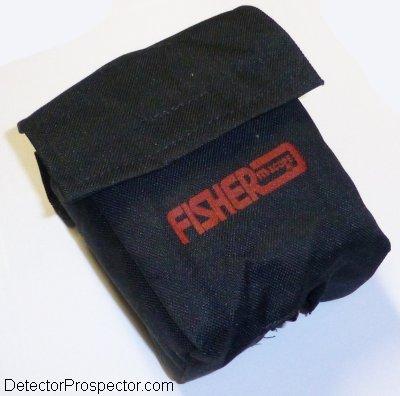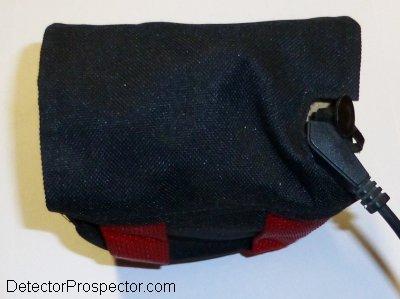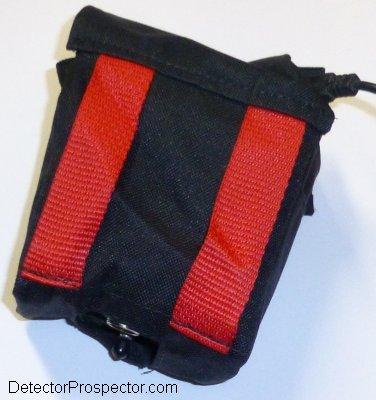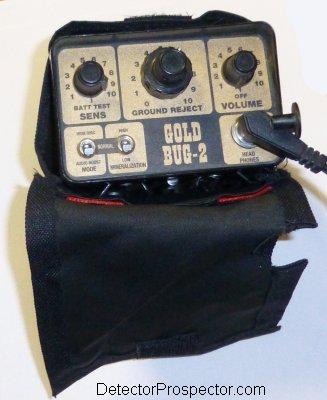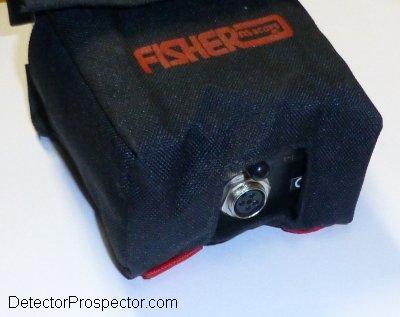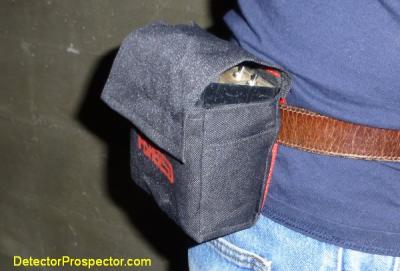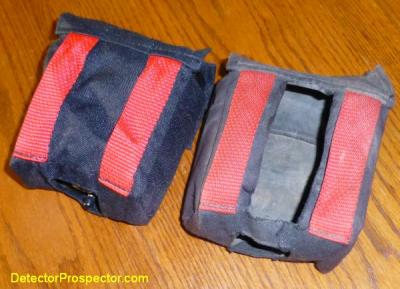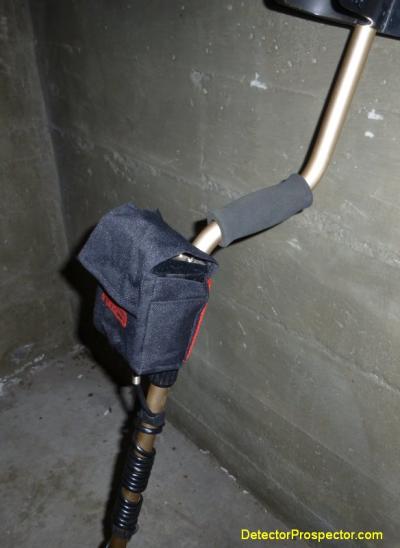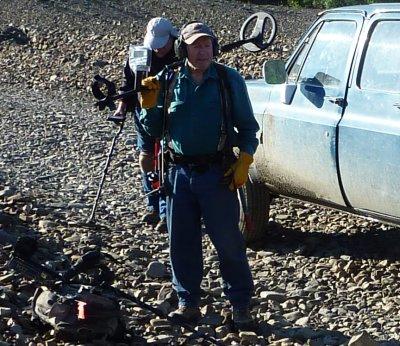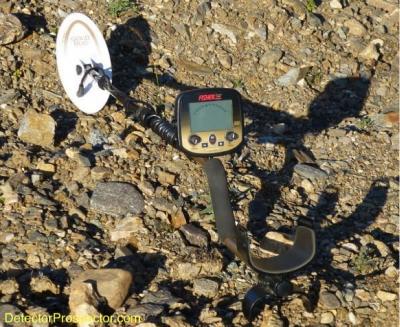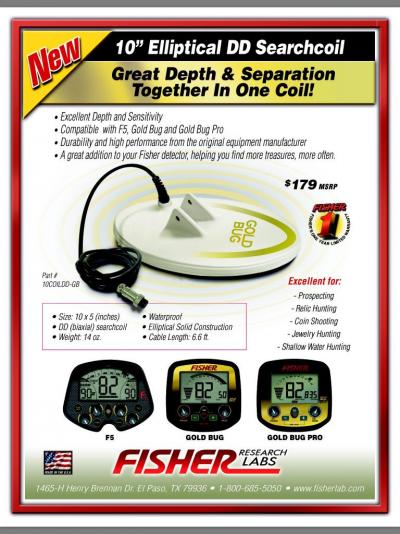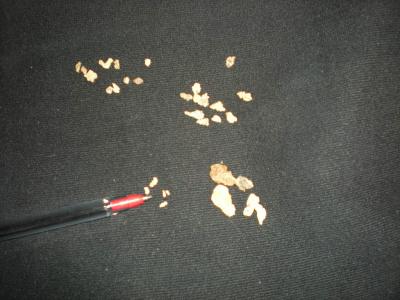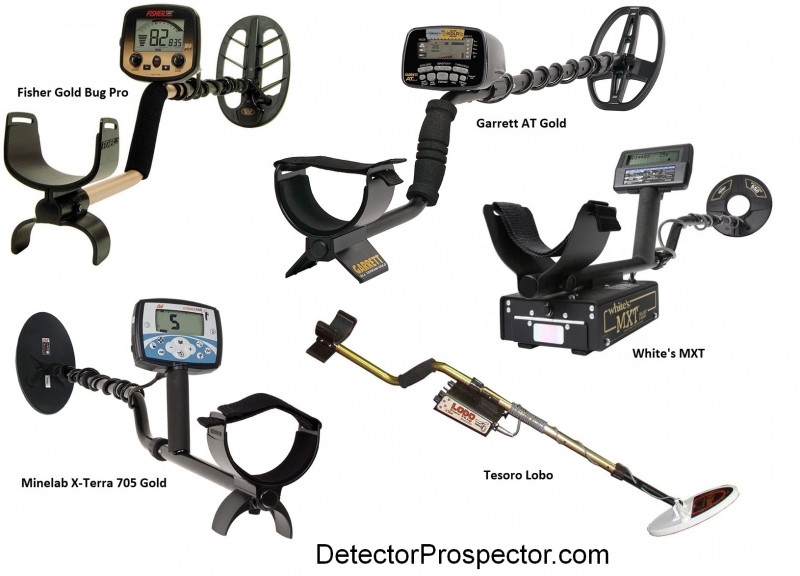Search the Community
Showing results for tags 'fisher gold bug'.
-
Thanks again Steve, you are definitely speeding up my learning curve. I live in Nevada now so it will probably be a few weeks before I can get back to the beach (my wife travels to California often and has a free companion pass so I tag along for free). I will share anything new I learn. Most of my experience has been with the Fisher GB2 on meteorites and while not related to beach hunting I have learned a few tips recently that have paid off. I usually hunt the Franconia Strewn field which consists of chondrites and tiny irons. Most of the chondrites have been found and most folks think the irons have as well. But many of the irons are tiny, some smaller than 0.1 gram. The irons exist in an area that has been more or less entirely gridded. I recently bought a 14" coil for my GB2 to allow me to cover more area and went back to Franconia a few weeks ago. I hunted the usual area of "iron alley". I kept the sensitivity maxed out at 10, as well as the audio and the audio boost switch on. I ground balanced often, but with these settings the GB2 more or less is continuously noisy. Anything less than max sensitivity would be a waste of time because most hunters run maxed out. Anyway, with all the visible scrapes and dig holes on the smooth desert pavement areas I decided to instead concentrate mostly on the areas with large basalt rocks from golf ball size to around softball size. The GB2 was screaming from all the hot rocks but every now and then I could hear a slight faint blip in the background. Sure enough many of these blips turned out to be irons and many were larger than normal up to 1.5 grams or so. After 3 days of hunting I had 49 irons and 2 chondrites, a new record for me! What I learned from all of this is to focus on the specific target sound or blip that usually indicates an iron and ignore all the hot rock sounds. It can be tough to do because the basalt hot rocks create a loud background chatter that is almost continuous. And most folks avoid the basalt area for that reason. This technique probably won't be much good with the ATX because it runs so quiet, but just thought I would share it. ....jim
-
My Fisher Gold Bug 2 is more like a mining tool than a metal detector. As such it gets subjected to a lot of potential abuse. In particular, I like to sit it upside down, control box on the ground, while I wave my scoop over the bottom of the coil looking for a tiny nugget. I have some money invested in this tool however and I want to take care of it. So I use a little known Fisher secret - the holster / control box cover for the Gold Bug 2. As you may or may not know the Fisher Gold Bug 2 is designed to be taken off the rod assembly, and by way of built in slots put on a belt and hip mounted. This is great for making the rod assembly super light for overhead use, like working a cut bank or steep tailing piles. It also puts the control box under your rain coat for protection. Note that bending over with the box on front of your hip continually bends the coil cable where it attaches to the box and will lead to premature cable failure. I therefore recommend mounting the box on your rear hip as shown. This is over my shirt for the photo, normally my belt would be holding my pants up also! Fisher Gold Bug 2 Belt Slots Fisher Gold Bug 2 Hip Mounted The holster of control box cover for the Gold Bug 2 is made of heavy waterproof cordura nylon with belt loops and a flip cover with velcro closure. It has a hole on the bottom to attach the coil cable and access the threshold control. The top cover has a notch for the headphone jack. The cover is originally designed as a hip mount holster option, using the loops incorporated into the holster instead of those on the control box itself. I wanted to use my control box cover, not for hip mounting, but while rod mounted. Here is a new cover next to my old cover with the slot I cut to allow the box to rod mount with the cover on. Just used scissors, never had an issue with tearing later. The final result - a fully protected Gold Bug 2 control box ready to lay in the dirt. The cover has a tiny pocket on each side but I have never used them. The top flips open easily for a quick control adjustment if needed or can be tucked in and left open if desired. This cover was made for years for the original Gold Bug and Gold Bug 2 and also fits the old 1225X and 1235X models. It was discontinued for several years and then made available again. Last MSRP I saw was $18.95 and part number 103696. Most Fisher dealers probably do not even know this exists so you may have to look around to actually find one in stock someplace. One of those hand made things that probably will be discontinued sometime so I got the second one just to have two.
-
There were amazing finds made at Ganes Creek, Alaska in the early years of the pay-to-mine operation there. One of the early visitors in 2004 was Steve Burris of Idaho. Steve was hunting downstream of the airstrip in an area well known to have produced large nuggets in the old mining days. His Gold Bug 2 screamed as loud as a Gold Bug can scream, and when he looked down a dust covered yellowish rock lay at his feet. It was a huge gold nugget weighing 33.85 ounces, and to my knowledge it is to this day the largest gold nugget* ever found in Alaska with a metal detector, though the 32.2 ounce nugget found at Moore Creek may have had more actual gold content. The backside of this nugget is actually mostly quartz showing. Still, a very spectacular find. Here is a photo I took of the nugget in my hand when Steve was kind enough to bring it by the shop to show to me. It is the best photo I have seen of the nugget and I do not think I have ever posted it before. Heart of Gold found by Steve Burris of Idaho at Ganes Creek, Alaska Steve named the nugget the Heart of Gold due to its shape when looked at right and the fact he had open heart surgery not long before visiting Ganes Creek. Steve is a super nice guy and I had the pleasure of rooming with him and detecting on later Ganes Creek visits. Here is a photo of Steve during our visit to Ganes Creek in the last year of operation in 2012. He was swinging a Minelab X-Terra 705 that year that got him a 2.74 ounce nugget. Steve Burris at Ganes Creek, Alaska in 2012 Steve wrote a story for the ICMJ Prospecting & Mining Journal that was published in August 2004 and can be read online at http://www.icmj.com/article.php?id=1248 if you have an online subscription. *There have been several larger gold specimens found in Alaska with metal detectors but they were mostly quartz. See http://www.akmining.biz/mine/nuggets.htm
- 3 replies
-
- 1
-

-
- alaska
- amazing finds
-
(and 1 more)
Tagged with:
-
Hi steve i attended your class a few years ago and really enjoyed it. I have a specific question. I want to target flakes and pickers and small nuggets behind my house in basically the Talkeetna mountains, which include hatcher pass, sutton area, willow, and numerous high small streams that i hike and four wheel into. from all the research i have done the fisher gold bug 2 seems to be the ticket and i see you have used it with great success. my question is this area a high mineralized area? i see the gold bug 2 is very sensitive to hot areas, i plan on using it a lot and practicing on the little sue with practice targets, is this something i need to be concerned with ? (also will be hitting crow creek,petersville and eureka) but mostly hatcher pass and sutton area. what are your thoughts on this?
-
Hey guys, I have 2 gb2s, has anyone had problems with threshold on these? What i have had happen with both mine on occasion is you will be going along just fine and threshold sound goes away sometimes temporarily sometimes you just bump it, sometimes you have to adjust slightly then it comes back on. I have adjusted it at higher threshold(louder) and it seems to stay on but to loud to pick up small gold. I seen another gb2 do this on occasion also. Whats up threshold switches themselves or somethihg different? Rick
-
The Gold Bug Pro had turned into one of my favorite prospecting machines, especially for trashy areas. Ray Mills and I have been bugging (get it?) Fisher to put the machine out with the 10" elliptical coil as stock. In my opinion it is the best all around coil for the detector and also makes it look like it should as a prospecting detector and cousin to the Gold Bug 2. Right now you can only get the coil as part of a package or as an after purchase accessory. The coil works on the Fisher F5, Gold Bug, Gold Bug Pro, and Teknetics G2.
-
Steve H has talked about the value of VLF machines many times, but here's my own new experience. I was bored during the holidays with time on my hands for detecting, alas my GPX is still at the Minelab detector Doctor. I decided to take Steve's sage wisdom to heart and give the Gold Bug 2 and 6.5" coil a proper go. I bought the GB2 from Steve at AMDS last year and had it out a couple times, a few crumbs here and there. I just never took the time to really get to know the detector. I know a weathered little valley down Yuma way, where the oldtimers drywashed the hell out of every wash and gulley. A couple years ago I pulled a sub-gram nugget off the slope with no more than 6 inches of dirt and gravel to host rock. I figured that would be prime ground for the GB. I planned an overnighter so that I could get the most out of detecting time, only to discover I had forgotten my headphones. Oh well, the GB has an external speaker, not ideal situation but tolerable. I rigged a neck strap for the control box to that the speaker was closer to my ears. That setup was fantastic, I would highly recommend it even with headphones. You can wave that wand with the little coil all day without any arm fatigue. I found my old dig hole and started beeping. Within minutes found gold and some decent pieces. Over the next 2 days I found 38 pieces in a band about 20 ft wide and maybe 100 ft long. I stood on the hill and looked at my gravel scrapes and the band was plain as day. There were a few oldtimer exploration holes nearby, all into a seam of red looking ore. I checked their tailings, lousy with iron trash from blasting caps and such. The photo shows the gold divided into categories. The biggest are in the .5 to .7 grams. The next size is 2 to 4 grains. The next size are sub-grain, 12 of them weighed 4 grains. The last ones with a ballpoint pen for scale are so tiny the whole lot won't register on my scale. What I learned. The GB2 is a fantastic machine in the right circumstances. In moderate ground it really has to move way way slow. The threshold autotune really needs time to catch up going over mineralized ground or you're going to hear far too many beeps, geeps and groans. Slow that bad boy down. The Maxed Out settings are the ticket to hear those little bitty ones. Iron discriminate will probably lose you gold. It would be a difficult machine to actually search for new spots. The coil coverage is so small and you have to move way too slow. It's suited for ground where you already know there is gold and can concentrate on low and slow. Like most of you, I enjoy the hunt. Sure, I wish all those nuggets were all in plus gram size, but I had a great time chasing those crumbs. Bravo Zulu to Steve H. for sharing his wisdom and knowledge for all things prospecting.
-
Despite all the noise about pulse induction (PI) metal detectors these days I firmly believe that in the United States most beginning and many professional nugget hunters are often better served with a good mid-frequency VLF. For beginners I think it is more important to master the real skills involved in prospecting before investing a ton of money in a metal detector. If you can't find gold with a $700 detector there is little point in investing thousands of dollars in a detector that still probably will not find the person any gold. Perhaps a PI is required in most of Australia but I have seen very few places in the United States where a good VLF will not work very well or at least well enough. Certainly in Alaska that is the case, where low mineral ground and smallish gold is the norm. Even locations where large gold lurks are so loaded with iron junk a PI detector has a hard go of it. It is nearly impossible to convince die-hard PI users to accept this until they experience it for themselves. One of the best detectorists I know has found hundreds of ounces of gold including two nuggets each weighing over a pound, all with a White's MXT. He also has a Minelab GPX 5000 and is very good with it. This last summer we hunted a lot together in junk infested tailing piles. I tended to use my GPX 5000 and he tended to use his MXT. We ran neck and neck for finds, and he detected less and dug way less junk than I. When all the shallow stuff is gone a PI shows its value with extra depth. But in target rich environments, especially ones filled with junk, a good VLF is a worthy choice. Let's set the VLF versus PI thing aside though and accept for the purposes of this article that VLF detectors are still a good choice for many people in the United States. I know for a fact I could own nothing but a VLF and do very well indeed. So what VLF to own? Two detectors stand out in their high operating frequency as dedicated nugget detectors, the Fisher Gold Bug 2 and White's GMT. I could make a great argument for why either of these detectors will eke out gold where other detectors fail and do it consistently enough that a skilled operator would be wise to own either one. However, I think overall a better case can be made that if a person had to own just one VLF detector, a mid-frequency model would be a better choice. There is much more versatility offered plus a better balance of performance on all ground types and all gold sizes than the hot high frequency models. The contenders from the "Big Five" brands? The Fisher Gold Bug Pro (also sold as Teknetics G2), Garrett AT Gold, Minelab X-Terra 705 Gold, Tesoro Lobo SuperTRAQ, and White's MXT. All available for around $700 more or less. This is the choice I personally faced, and the decision took several years of use to settle. What follows is purely personal but I will explain why I ended up where I did. Fisher Gold Bug Pro, Garrett AT Gold, Minelab X-Terra 705 Gold, Tesoro Lobo, White's MXT First up, the White's MXT. Simply a superb detector, and one that has found me pounds of gold. Yet I am just going to go ahead and blow White's off at this point! Why? The weight. I am sorry White's, but at 4.3 pounds the MXT is the heaviest detector in this slug-fest. I love what the detector does, but I am no longer willing to forgive detectors with poor ergonomic factors, weight being the most obvious. In the 21st century, the day and age of the iPhone, poor ergonomics is not acceptable. The MXT needs to lose a pound, plain and simple. So I sold my MXT after one particularly arm wearing day. Now the Tesoro Lobo SuperTRAQ is a great beginners detector in that it is very easy to operate, but it also gets put aside. The detector is locked in ground tracking at all times while in all metal nugget mode. This is great for beginners but I personally find it unacceptable. I almost never use ground tracking systems as they mess with the signals from weak targets. If there was a locked or fixed mode it would be fine. Worse yet, the alternative discriminate mode has a factory pre-set ground balance. Sorry, fail. Just my opinion, but the Lobo is way overdue for an update after 16 years on the market. Garrett is to be commended for finally producing a waterproof detector that does not penalize the owner by weighing a ton and removing all the features. The AT Gold is a miracle in being waterproof and yet fully featured, with even the speaker being waterproof. And only three pounds with batteries! This detector is so wonderful I really do feel bad about taking a pass on it here also. Why? Sadly, the waterproof design also means special o-ring connectors for the coils and headphones. If you do not need the detector to be waterproof they are delicate connectors that collect dirt and require quite a bit of care to not mess up. The coil connection in particular is in a maddening location making it almost impossible to connect coils with bare fingers alone. A special adapter must be purchased if you want to have a choice in headphones. If you want waterproof the AT Gold is an obvious choice but I do not need waterproof for most of my nugget detecting. So down to two models, the Fisher Gold Bug Pro and Minelab X-Terra 705 Gold. Both under the magic 3 pound mark! Both with extremely powerful all metal modes. So powerful that in all metal mode these detectors give the PI units a run for depth in most ground on most gold in the US. This was tough for me as the X-Terra has a far richer feature set than the Gold Bug Pro and for many all around users would be the better choice. But I looked at both from strictly a nugget hunting perspective where those extra features are extraneous to the task at hand. It came down to this. In all metal mode the Gold Bug Pro is simultaneously and separately running in discriminate mode. The audio response is pure all metal, but you also get the probable target id, when possible, displayed on the screen. Very deep targets will have no target id, which is why we are using all metal prospect mode in the first place. The X-Terra 705 you can run in Prospect Mode or Discriminate Mode, but not both at once. This one thing leads to more efficient detecting with all the information you need on screen at once. The Gold Bug Pro gives you the target id, ground phase, and magnetic susceptibility reading all on screen at once while in all metal mode. ads by Amazon... That is how I settled on the Fisher Gold Bug Pro as my all around do everything nugget hunting model. It is not a coincidence it is also the lightest of the bunch at only 2.5 lbs with battery and 5” round DD coil and 2.7 lbs with the 5” x 10” DD coil. It is a basic unit that gets the job done, and that appeals to me. Plus, it does just fine for coins, relics, and jewelry if I wish. if I could improve only one thing it would be to swap the position of the target id and phase readout on the meter. I have to wrap this up by pointing out that these are all fine detectors. I can actually find gold about as well with all of them. The engineers have mid-frequency all metal detectors figured out, and in all metal mode these models are practically equivalent. Small nuances that help one model in certain ground cost it in another and it all evens out. So from a straight up all metal nugget hunting perspective I think a person can use any one of these detectors and be just fine. What differences there are show up far more when comparing discrimination features which are of little use to the nugget hunter. With that said, the final lesson in this article is that it is all the other factors a person should be looking at when making a choice. For me it was just lightweight basic operation. But if waterproof is important, the AT Gold is a no-brainer. The Lobo is very forgiving for beginners simply because it is locked in ground tracking mode. The MXT is a superior all-arounder, and the X-Terra has various tone schemes and notch discrimination features common on top-end detectors. You can make the case for any of them depending on your own particular needs and desires in a detector, and know you will be well served for basic all metal nugget hunting capability. We are lucky to have so many fine choices, all at very affordable prices.
- 33 replies
-
- 5
-

-
- whites mxt
- fisher gold bug
-
(and 1 more)
Tagged with:


